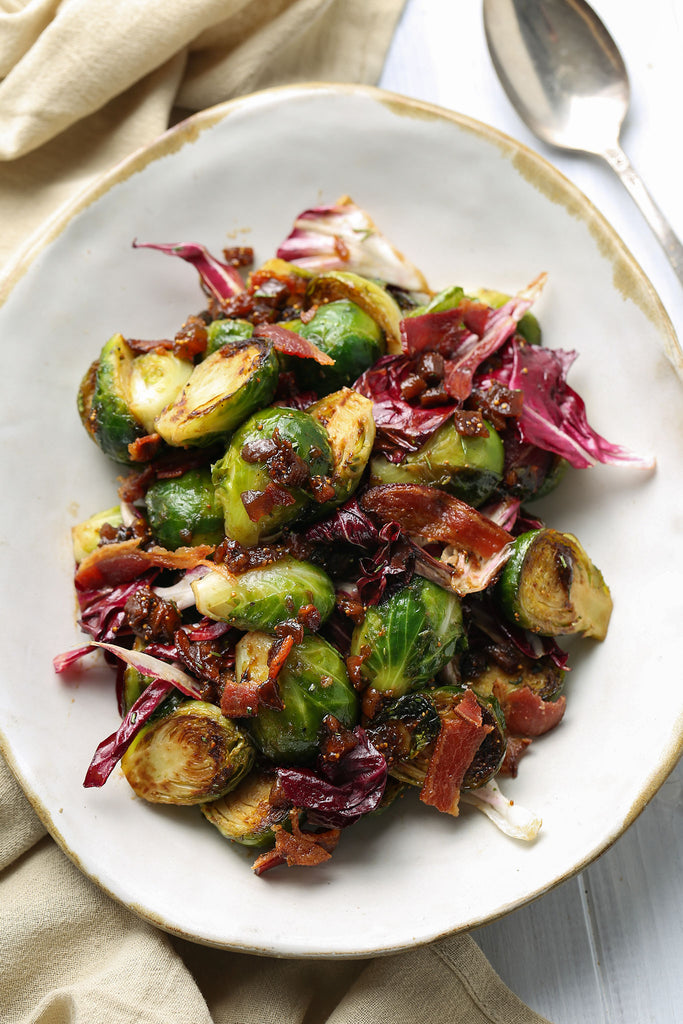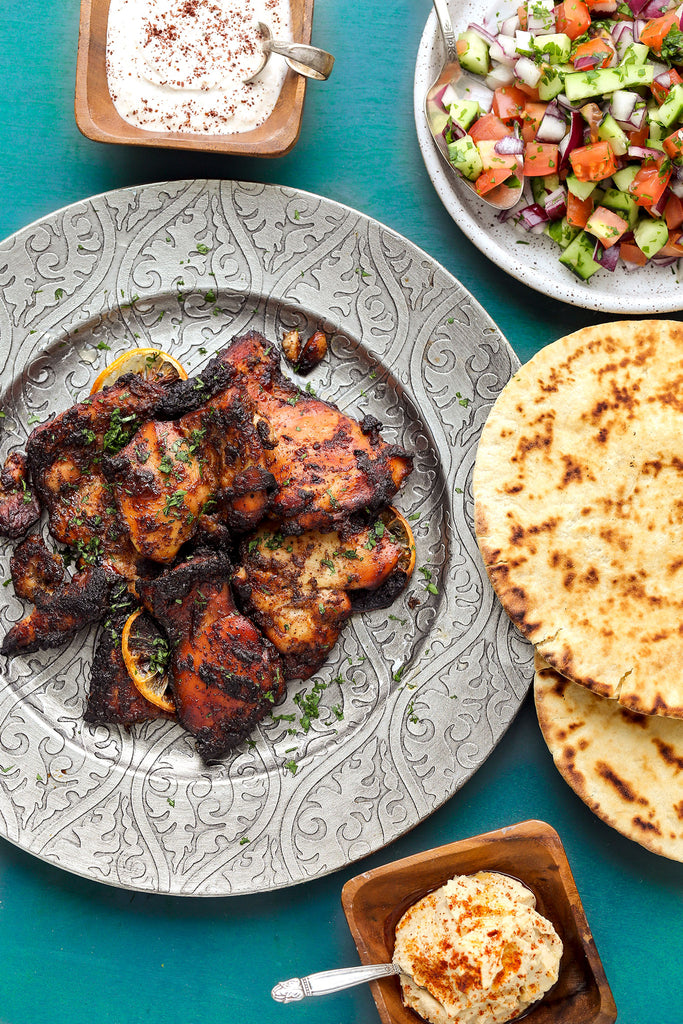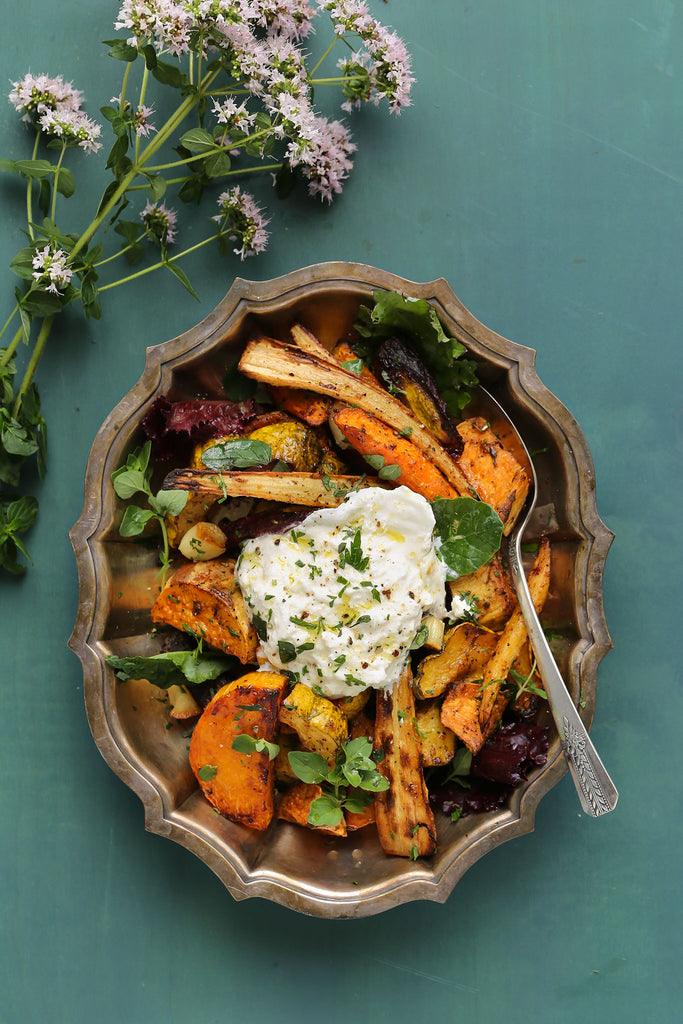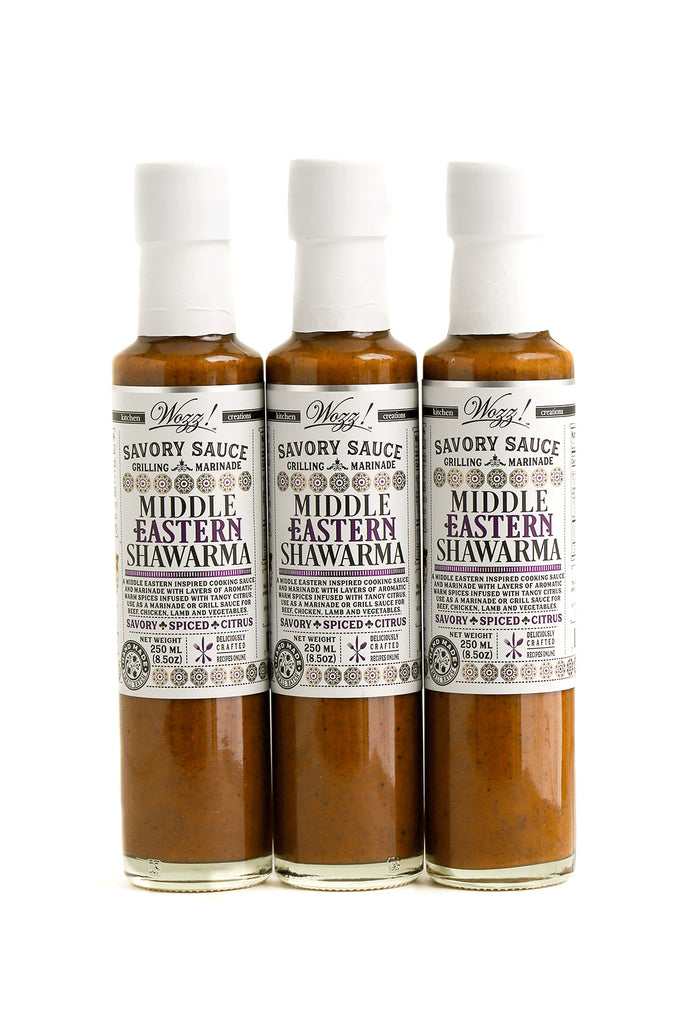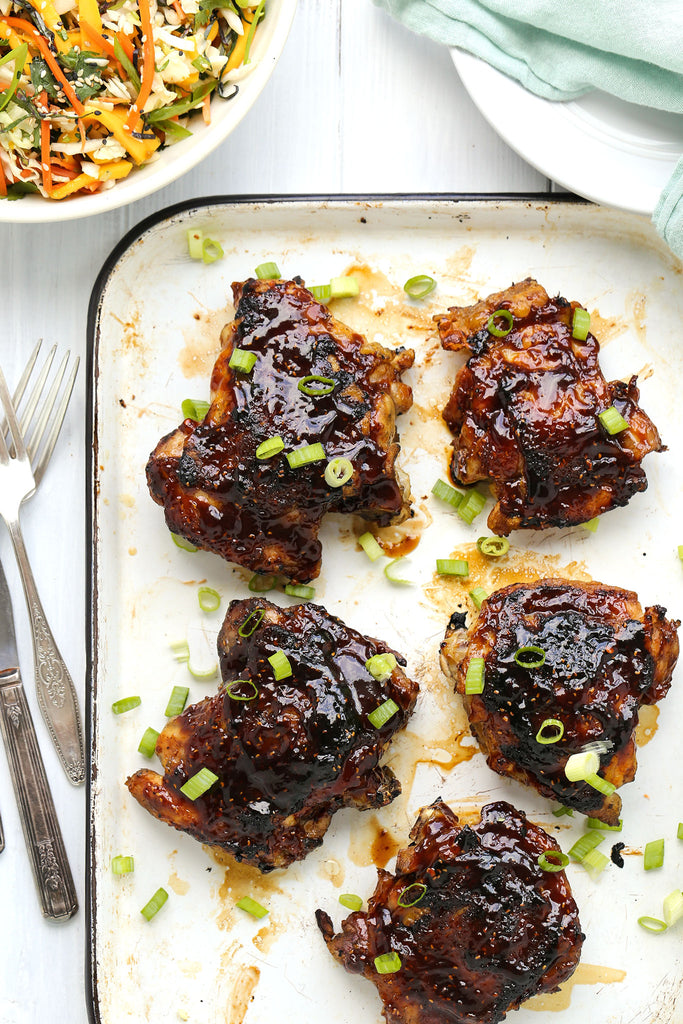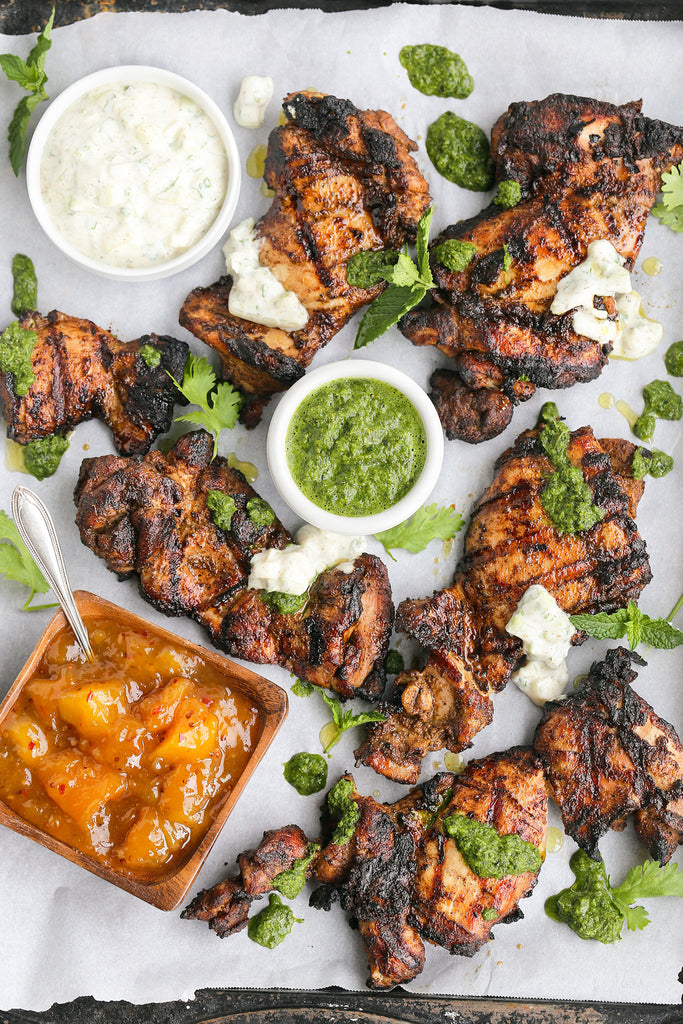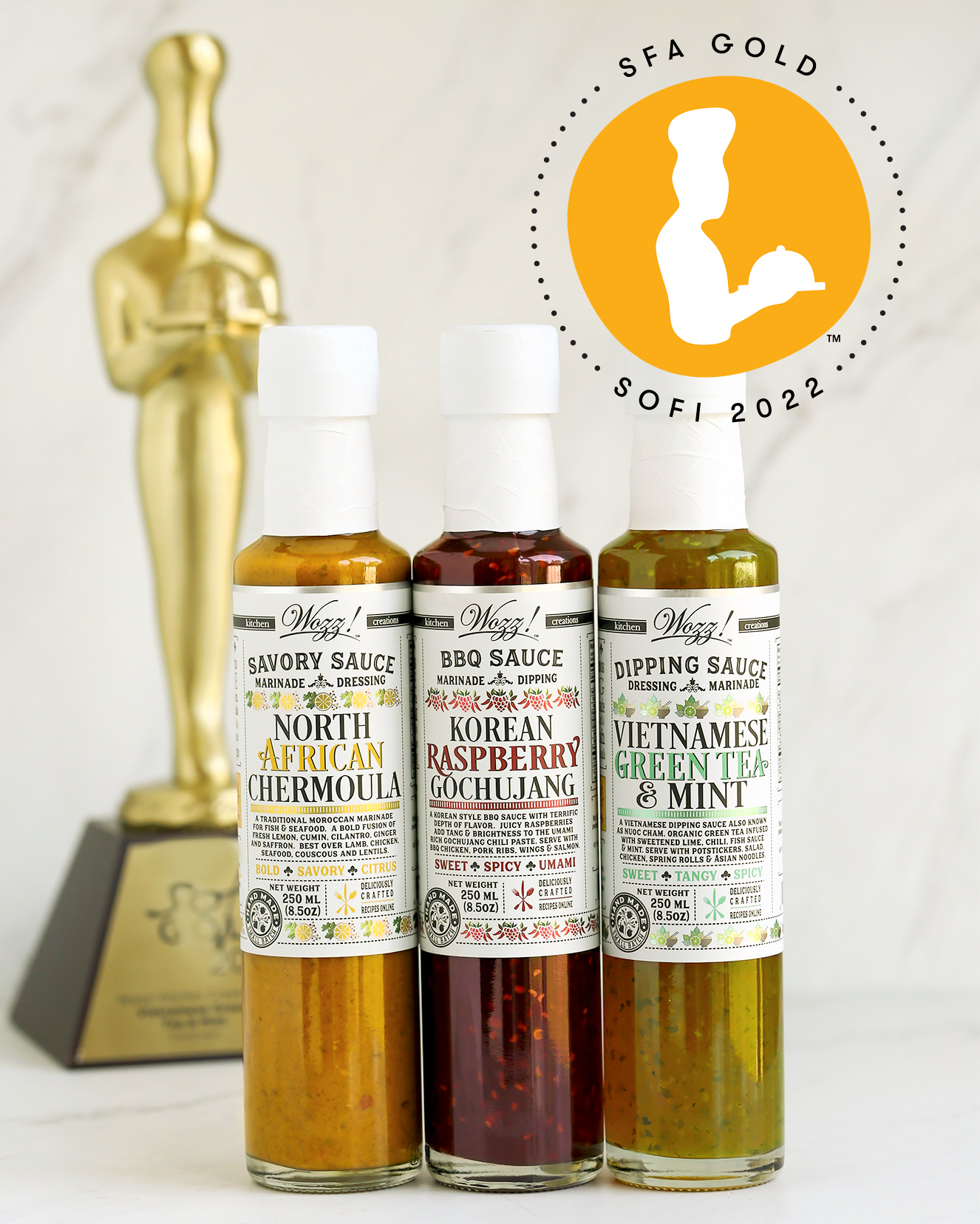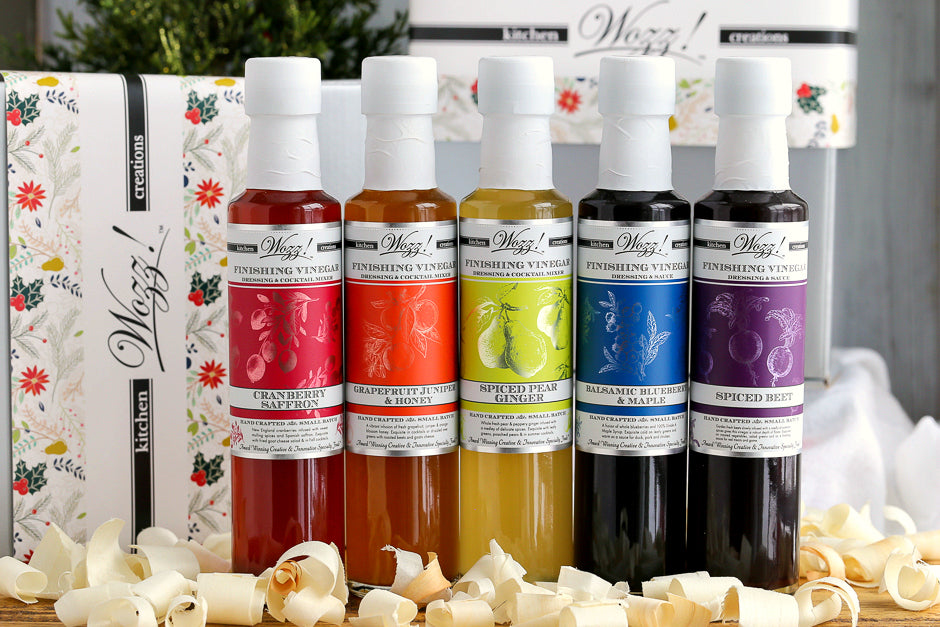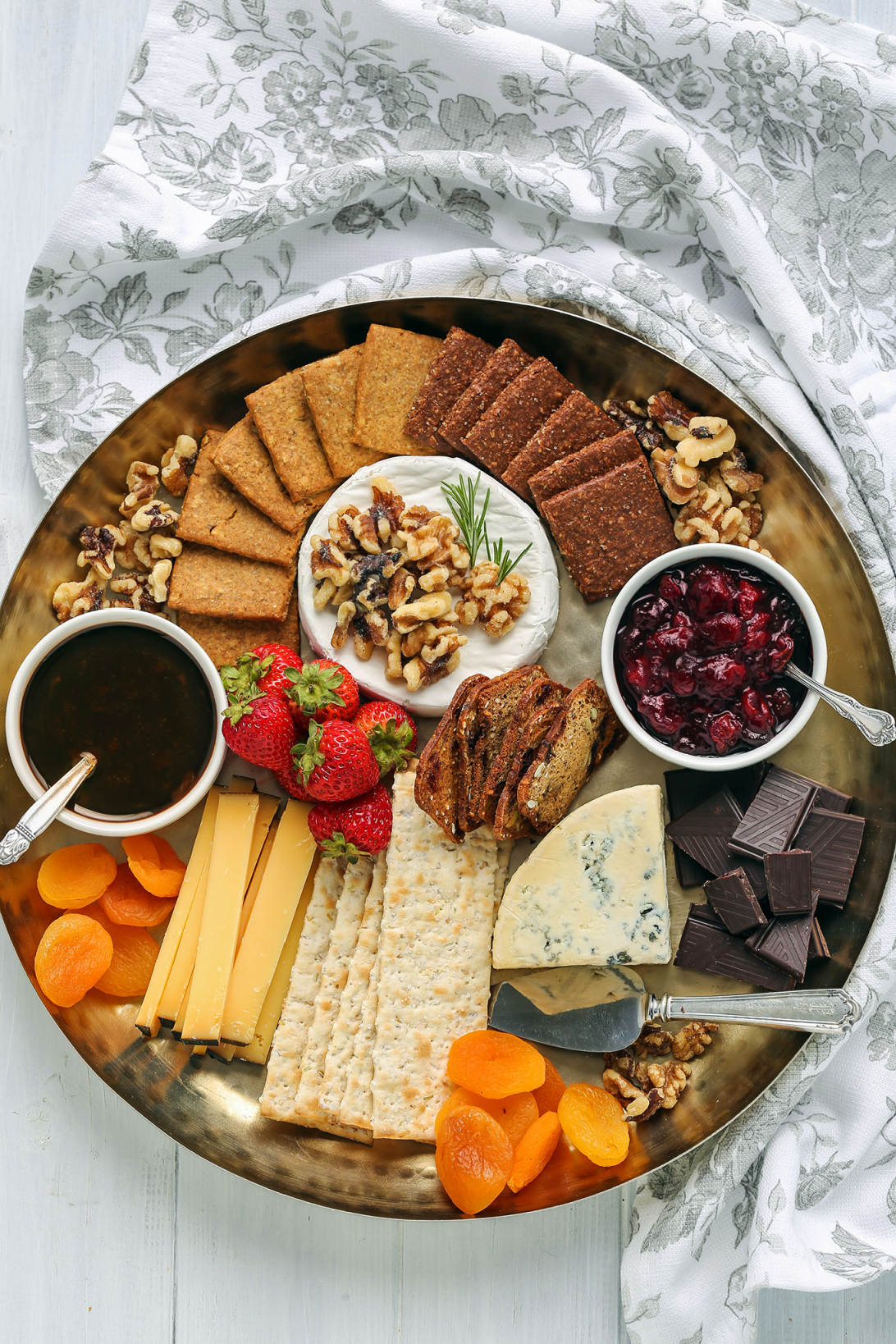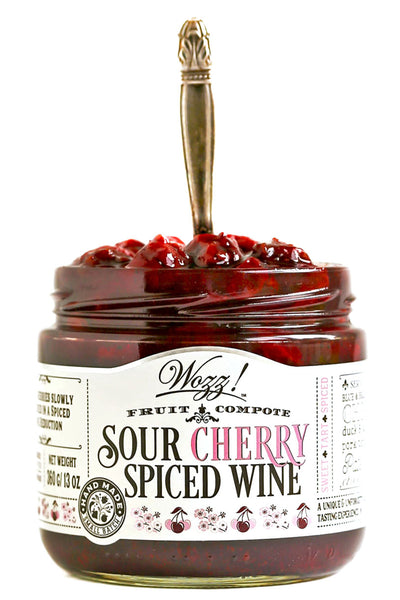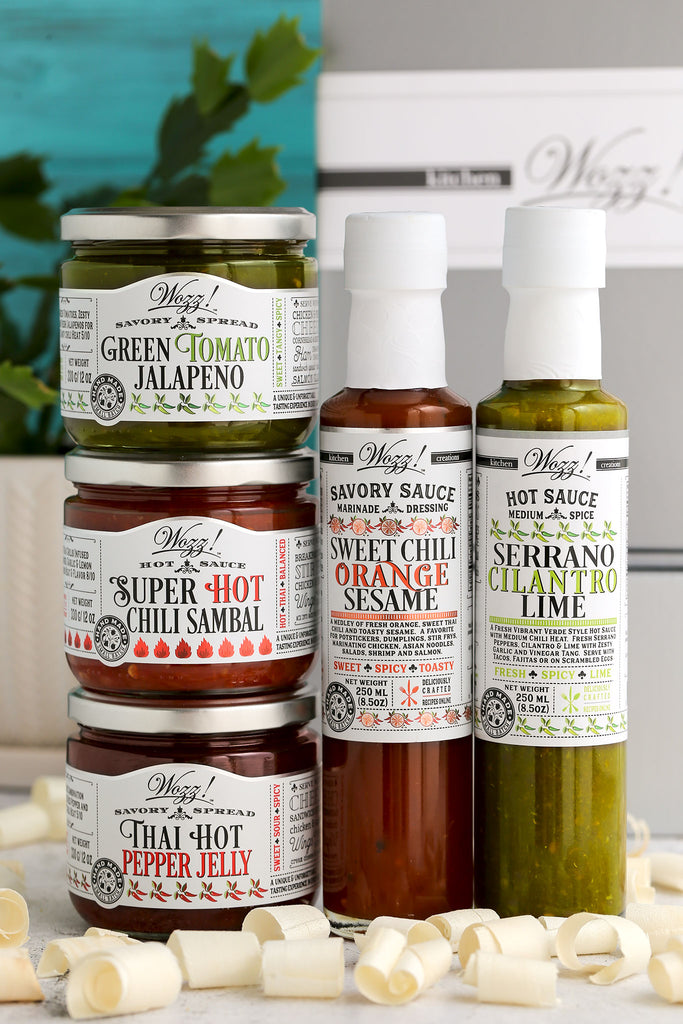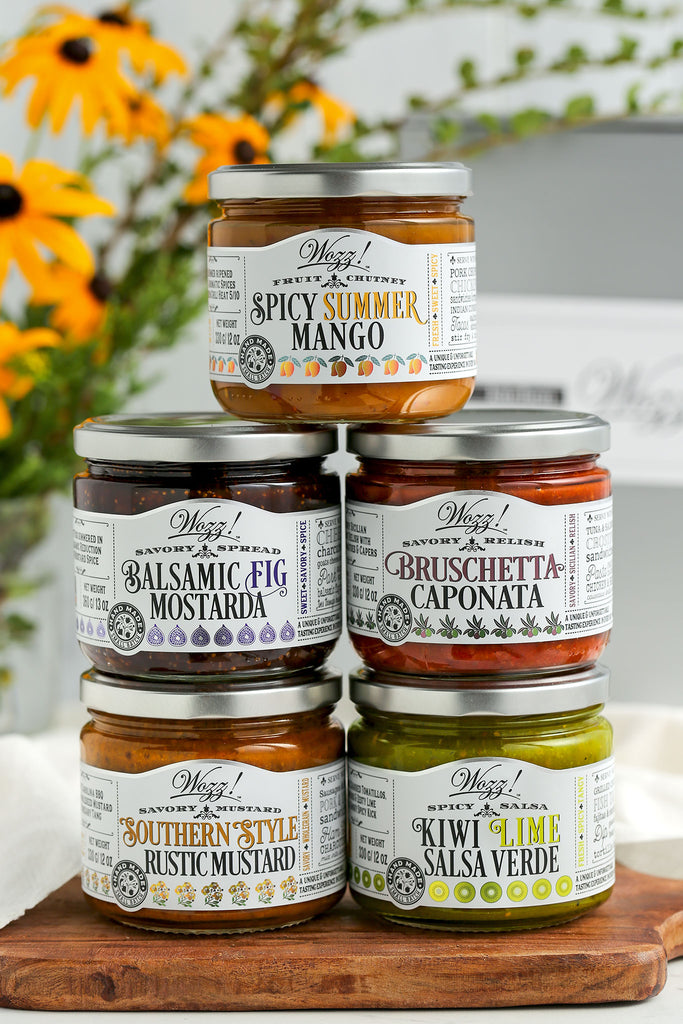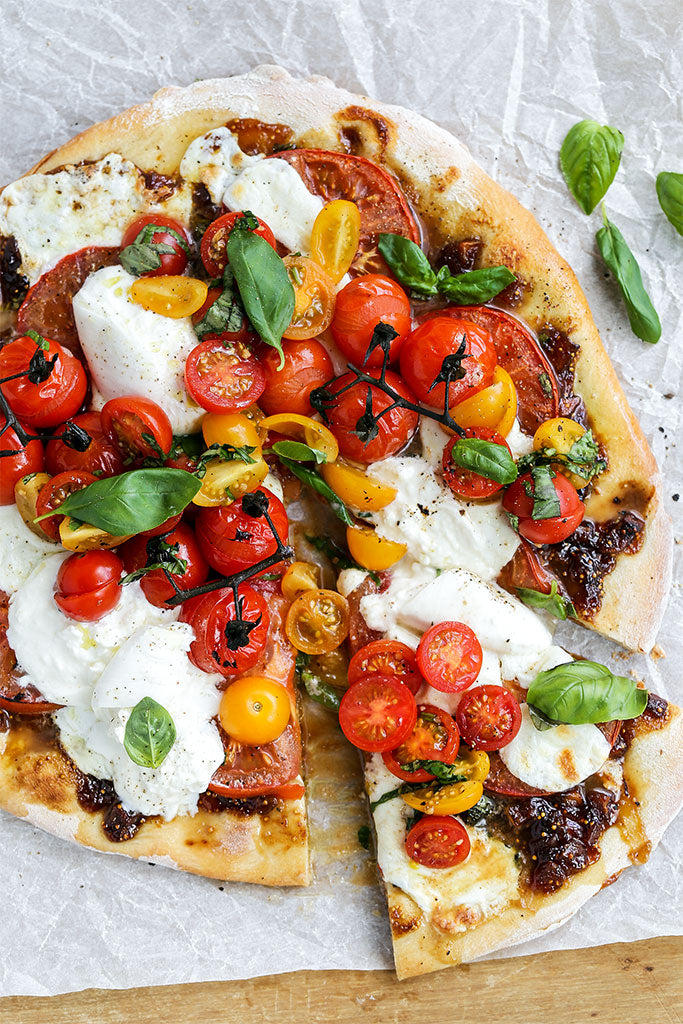Best and Easiest Ways To Use Fruit Chutney
A fruit chutney is made by simmering chopped fruits and vegetables with added acidity from vinegar or citrus and adding spices and sometimes herbs. The balance of flavors in a fruit chutney is not as straight forward sweet as a fruit jam and not as sour as a pickle. A fruit chutney has a balanced medley of sweet, tangy and savory flavors.
Depending on the varieties of fruit chutney they can be sweet tart and spiced such as in a traditional cranberry chutney with cranberries, sugar, aromatic sweet spices and orange or they can be more sweet and spicy such as in an Indian mango chutney with mango, vinegar, ginger, coriander and chili. Bottom line is they are delicious and offer a complex flavor profile that lends itself to being quite versatile in the kitchen. Fruit chutneys are a fantastic accompaniment to a variety of dishes from appetizers, to roasted meats to cheese plates, curries and sandwiches. Here are our recommendations on how to best use a fruit chutney.
1. An Accompaniment To Roasted Meats
Fruit chutney is a classic accompaniment for roasted meats. From cranberry chutney to plum and apple chutney to an apricot and ginger chutney, they are a lovely addition to the table when serving roast turkey, pork tenderloin, pork chops, chicken, roast beef and duck.
Pictured Below: Pork Tenderloin with Winter Spiced Fruits and Honey Confit Chutney
2. Serve Fruit Chutney With Cheese
Chutney is a wonderful addition to any cheese plate. Pair an aged cheddar with a sweet and spicy fruit chutney such as our Green Tomato Jalapeno or serve a blueberry chutney with an aged goats cheese. Fig chutney is a cheese pairing pantry staple and works well with most cheese varieties including sharp blues, brie and goats cheese. A caramelized onion chutney can be paired with cheddar, Manchego and stilton for a more savory cheese pairing spread.
Pictured Below: Aged goats cheese paired with Wozz! Wild Blueberry Maple Walnut Fruit Compote
3. In A Ploughman's Lunch
The British style Ploughman's lunch has all the fixings that go so well with a fruit chutney; crusty bread, cheddar cheese, pickles and cold cuts. You add a little sweet savory and tangy chutney such as a mango chutney, tomato chutney or date chutney to this meal and all the flavors just come together. Simple and delicious!
4. As An Accompaniment To Indian Curries and Indian Cuisine
Indian cuisine and chutney go together hand in hand. India is where chutneys originated and there are a ton of variations of Indian style chutneys from fresh savory herbaceous chutneys to hot spicy pickle chutneys. The most popular chutney in the US is Major Grey's chutney which is a mango chutney. It's delicious paired with Indian curries such as beef vindaloo and chicken tikka masala. The sweetness of the mango chutney actually helps balance the chili heat that comes when you eat spicy curries.
Pictured Below: Indian Grilled Chicken with Mango Chutney and Cilantro Mint Sauce
5. As A Salad Dressing Ingredient
Add a little sweetness and spice to a simple homemade vinaigrette recipe by adding a spoonful of chutney. Simply whisk in a couple tablespoons of fruit chutney to your base of vinegar, lemon, honey, Dijon and salt and pepper. Most chutney varieties will work from a plum chutney to a mango chutney. You can also add a spoonful of fruit chutney to your coleslaw recipe.
6. As an Accompaniment To A Charcuterie Board
Add a fruit chutney such as a cherry or fig chutney, green tomato chutney or caramelized onion spread to a charcuterie board of cured meats, crackers, cheese and pickles. A little fruit chutney adds a beautiful addition to your charcuterie board and adds that sweet addition to the savory salty cured meats and pickles.
Pictured Below: A Festive Fall Charcuterie Board with Savory Onion Jam

7. As A Sandwich Condiment
A fruit chutney can be used a few different ways on a variety of sandwiches. You can add a light layer of chutney to your bread, like on a simple ham and cheese sandwich or you can mix a little chutney in with your mayo. You can also add a fruit chutney such as a cranberry, apricot or mango chutney to a chicken salad sandwich for a flavor pop. I also like to glaze meatballs with a sweet and spicy pepper chutney and add them to a roll for a delicious meatball sub.
Pictured Below: Chicken Salad Sandwich with Cranberry Chutney
8. Add Fruit Chutney To Puff Pastry Appetizers
A jar of fruit chutney is great to have on hand for easy puff pastry appetizers. You can make so many appetizer varieties with chutney, cheese and puff pastry from mini tarts to pinwheels to baked brie en croute to puff pastry bundles. A super simple recipe is mini tarts, just add a little bit of cheese to your mini tarts (goats cheese, brie, camembert), top with chutney and bake for 10 minutes, then garnish with chopped nuts or fresh herbs. Entertaining made easy.
Pictured Below: Brie Puff Pastry Appetizer with Cranberry Chutney
9. Use Fruit Chutney As An Accompaniment To Grilled Fish and Seafood
A tropical style chutney is lovely with a nice piece of grilled fish such as mahi mahi, swordfish or halibut. A mango or pineapple chutney is also fantastic with grilled shrimp. You can always elevate a jar of chutney by adding extra fresh ingredients to liven it up, you can add a squeeze of fresh citrus like lemon or lime to your chutney or add extra chopped cilantro or mint. It gives it an extra pop, especially for fish and seafood.
Pictured Below: Grilled Swordfish with Jamaican Jerk Pineapple Chutney
10. Pair Fruit Chutney with Grilled Meats
Serving chutney alongside grilled meats adds a punch of flavor to really simple meals such as grilled chicken breasts, flank steak or pork chops. A tropical style chutney such as mango or pineapple is delicious in the summertime with grilled chicken or pork chops. A spiced dried fruit or cherry chutney is well suited for fall and winter when you are using a grill plate indoors or pan searing something like pork chops or sausages.
Pictured Below: Jerk Grilled Chicken with Jamaican Pineapple Chutney
11. Use Fruit Chutney As A Topping For Baked Brie
What is a holiday table without a baked brie with fruit chutney? It's a classic pairing that we all love and crave every holiday season. An apricot or dried fruit chutney or fig jam is often times used in a brie en croute but a blueberry or spiced cherry compote is also delicious choice. You can also add additional toppings to your chutney to spoon over the baked brie including chopped nuts such as walnuts or pecans and fresh herbs such as rosemary and thyme.
Baked Brie with Sour Cherry Fruit Compote, Pecans and Thyme
12. Fold Fruit Chutney Through Rice, Beans and Stuffing
Add a spoonful of fruit chutney to your rice dishes, bean salads and stuffing mix for some additional fruit flavor and spice. We love a tropical style pineapple chutney folded through rice and served with grilled shrimp skewers. We also add date and orange chutney to our stuffing mix with fresh sage, thyme and rosemary. You can also add some mango chutney to coconut rice and serve with chicken.
Pictured Below: Herb Stuffing with Date and Orange Chutney and Pecans
13. Garnish A Moroccan Stew or Tagine with Fruit Chutney
Add a chutney such as a date and orange chutney to your Moroccan tagines to add a touch of sweet dried fruit to the savory flavor profile. Many Moroccan tagines (Moroccan stew) use both savory ingredients such as preserved lemons, garlic, onions and olives and balance the savory flavors with sweet dried fruits and aromatic spices such as cinnamon. So adding a spiced dried fruit chutney can be used in place of your dried fruit ingredients when making something such as a lamb tagine.
14. Top Burgers, Pulled Pork Sandwiches and Meatball Subs with Chutney
Add a mango or pineapple chutney to your next turkey burger or BBQ pulled pork sandwich. You can also glaze meatballs with sweet and spicy pepper jelly and serve in a sub roll with fresh veggies and mayo or top a chicken burger with Green Tomato Jalapeno Pepper Jelly for sweet tangy and spicy kick.
Pictured Below: Chicken Meatball Sub with Thai Hot Pepper Jelly
15. Use As A Dipping Sauce
Use a tangy and spicy fruit chutney as a dipping sauce for eggrolls, beef skewers, fried shrimp, papadums, samosas, savory meat pies, fritters, chicken tenders and more.
16. Use Fruit Chutneys To Season Vegetables
From brussels sprouts to green beans, a little chutney can add a wonderful sweet spiced addition to your veggie dishes. You can mix up dried fruit chutney with toasted nuts and feta cheese and spoon over butternut squash or add an onion chutney to green beans with bacon.
Pictured Below: Sauteed Brussels Sprouts with Balsamic Fig Mostarda and Bacon
17. Add Fruit Chutney To A Stir Fry
Add a sweet and spicy chutney to a stir fry of chicken, beef or tofu with veggies. We love a beef stir fry with a little Thai Hot Pepper Jelly added to a soy sesame base and we add mango chutney to a chicken, green beans and cashew stir fry for a fresh mango pop.
18. Spoon over Tacos
Spoon a sweet and spicy fruit chutney such as a mango chutney or pineapple chutney over shrimp tacos or beef and bean tacos with a little sour cream and a squeeze of fresh lime. Delicious!
Pictured Below: Blackened Fish Tacos with Jerk Pineapple Chutney
19. Mix Fruit Chutneys Into Dips
Add a spoonful of fruit chutney to sour cream or cream cheese for a creamy dip that you can serve with crackers or vegetable crudité. Cranberry chutney or pepper jelly with cream cheese is an easy crowd favorite during the holiday season. Another delicious option is a tomato relish or a dried fruit chutney spooned over whipped goats cheese and served with crostini. Adding a fig chutney to an olive tapenade helps offsets the saltiness of the olives and adds a deeper richer flavor to the tapenade.
20. Add Fruit Chutney To Crock Pot Meals
Add fruit chutney to the crockpot when making meals such as crockpot pulled pork or party meatballs. From cranberry meatballs to pineapple pork to mango chicken to Moroccan stew.
21. Fruit Chutney For Holiday Entertaining
Fruit chutney during the holidays is a staple pantry ingredient and makes a gorgeous and tasty accompaniment to holiday appetizers, cheese plates, baked brie, roasted meats and charcuterie boards. From Thanksgiving turkey with cranberry chutney to a baked brie with an apricot cherry sultana chutney, a fruit chutney is a must-have condiment during the holidays (at least in our house).
Pictured Below: Open Faced Thanksgiving Turkey Sandwich with Gravy and Cranberry Chutney













